|
Matteo Farina 🇮🇹 / 🇩🇪 I am an ELLIS PhD Student at the University of Trento and the University of Tübingen advised by Elisa Ricci and Matthias Bethge. I am also really fortunate to have Massimiliano Mancini as a co-advisor. Before starting my PhD, I got both my BS/MS from the University of Trento. |
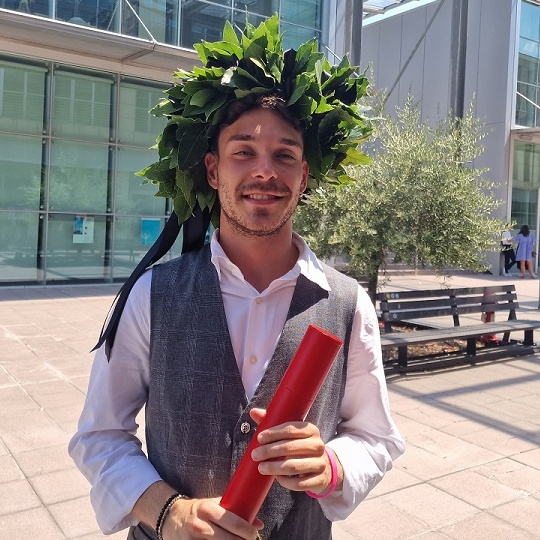
|
Research Interests🔭 Currently. My work revolves around Large Multimodal Models (LMMs, image/text-to-text) and Vision-Language Models (VLMs, clip-like contrastive schemes), especially their zero-shot, few-shot, and test-time generalization. I approach this from two angles: ☝️ inspecting pretrained models—adapting the knowledge instilled in pretrained models with little to no supervision and ✌️ (more recently) data-centric pretraining—exploring how smarter pretraining, better-curated data, and clever data curricula create stronger learners along different verticals. ⌛️ Previously. I worked on Model Compression sponsored by a research gift from Cisco Research. During my MS, I was a Reserch Intern with Elisa Ricci, Federica Arrigoni—University of Trento, working with Luca Magri—Politecnico di Milano and Vladislav Golyanik—Max Planck Institute for Informatics on Quantum Computer Vision. |
Publications |
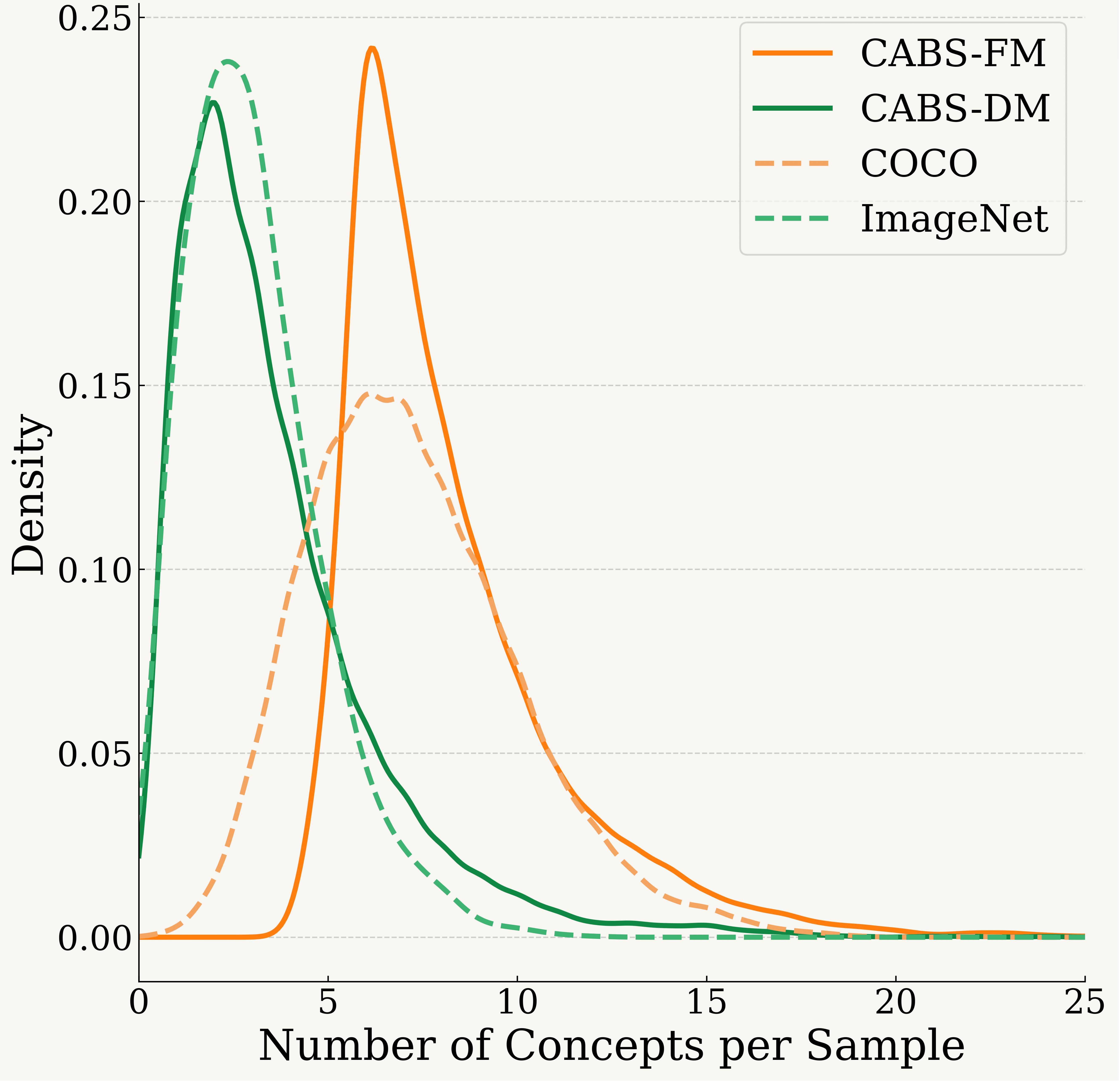
|
Concept-Aware Batch Sampling Improves Language-Image Pretraining
Adhiraj Ghosh, Vishaal Udandarao*, Thao Nguyen*, Matteo Farina*, Mehdi Cherti, Jenia Jitsev, Sewoong Oh, Elisa Ricci, Ludwig Schmidt and Matthias Bethge arXiv PrePrint, November 2025 Tweet / arXiv / Code tl;dr. We introduce DataConcept, 128M image-text pairs annotated with concept-centric information, and Concept-Aware Batch Sampling (CABS), a framework to use concept information to curate batches online instead of static curation. Motivated by the observation that ImageNet and COCO training sets exhibit substantially different concept compositions, we propose 2 variants of CABS, i.e., Diversity & Frequency Maximization, yielding boosts up to +7% and +9% on zero-shot clf and retrieval benchmarks, respectively. |
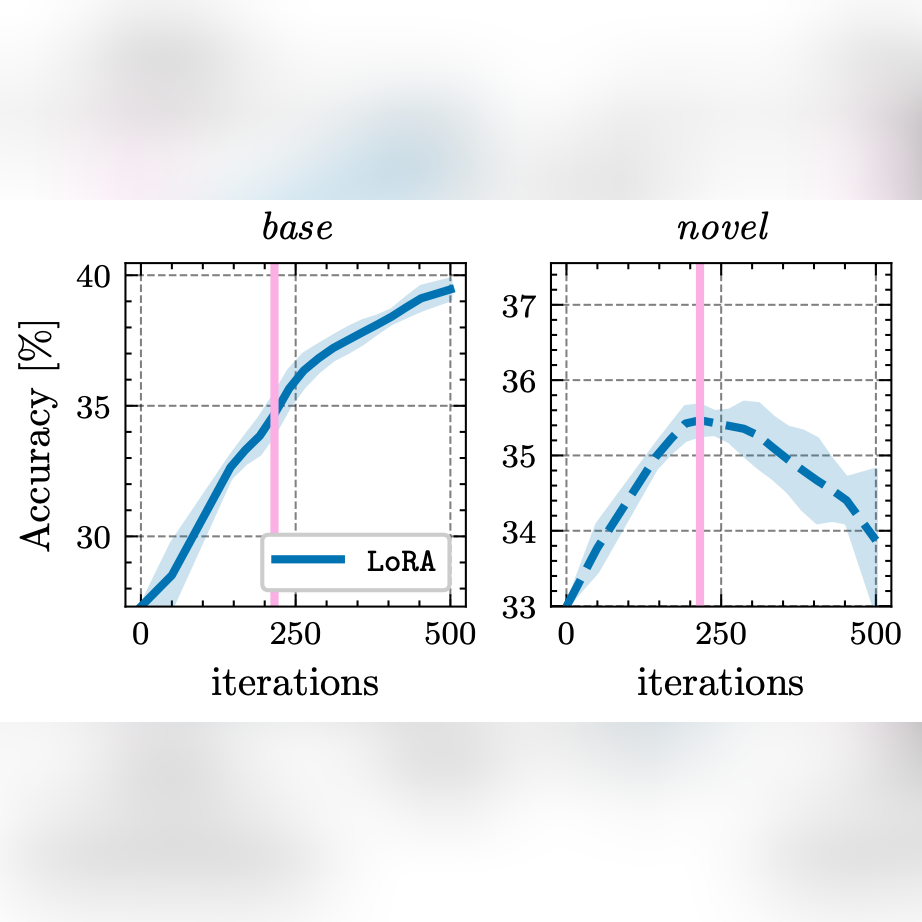
|
Rethinking Few-Shot Adaptation of Vision-Language Models in Two Stages
Matteo Farina, Massimiliano Mancini, Giovanni Iacca and Elisa Ricci CVPR - IEEE/CVF Conf. on Computer Vision and Pattern Recognition, 2025 arXiv / Code tl;dr. We empirically show that the learning dynamics of PEFT techniques typically used for Few-Shot Learning naturally splits into two distinct stages: task- / domain-level feature extraction, and specialization to the annotated categories (≠ overfitting). We then show that a simple linear classifier trained after stage 1 consistently achieves state-of-the-art results, thereby largely simplifying FSL. |
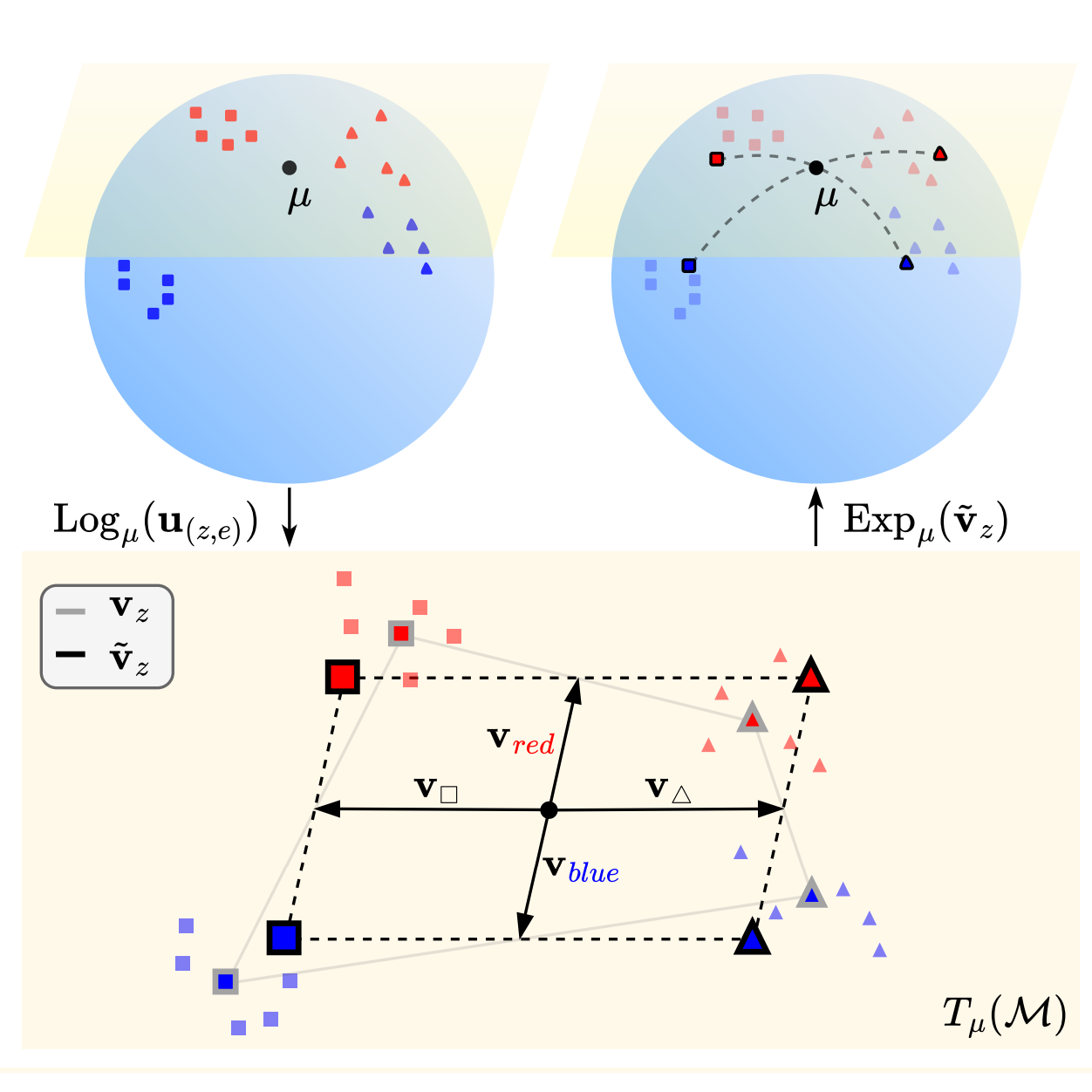
|
Not Only Text: Exploring Compositionality of Visual Representations in Vision-Language Models
Davide Berasi, Matteo Farina, Massimiliano Mancini, Elisa Ricci and Nicola Strisciuglio ✨ Highlight at CVPR - IEEE/CVF Conf. on Computer Vision and Pattern Recognition, 2025 arXiv / Code tl;dr. This work investigates the existence of compositional structures in sets of visual embeddings. We observe that a linear structure (successfully used for textual embeddings in prior work) fails for visual inputs, but one can nevertheless use it on a plane tangent to a "decomposition context" lying on a manifold of arbitrary shape (for CLIP, this is a hyper-spherical one). Surprisingly, this Geometry-Aware framework outperforms task-specific solutions for Group Robustness and optimizes for controllable image generation. |
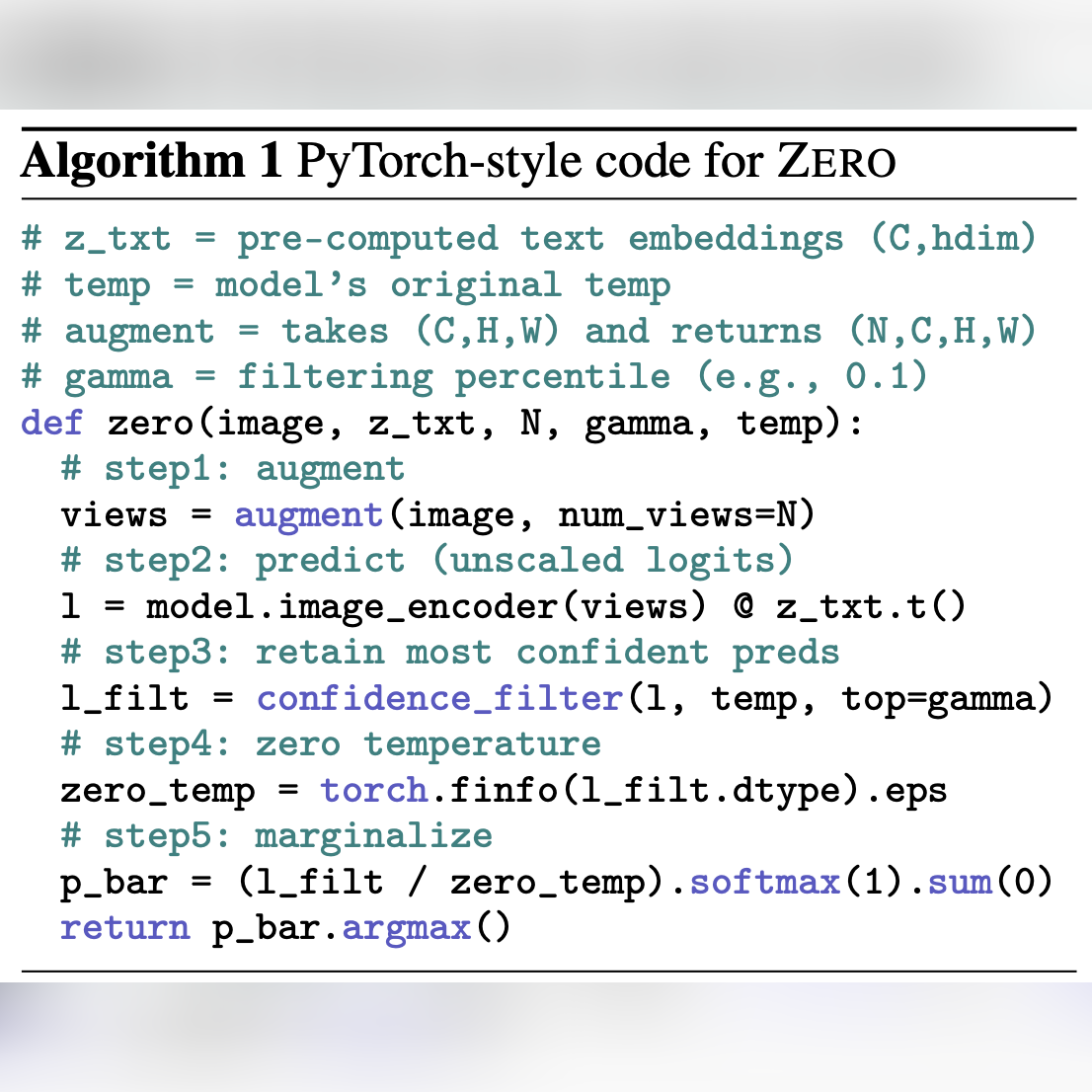
|
Frustratingly Easy Test-Time Adaptation of Vision-Language Models
Matteo Farina, Gianni Franchi, Giovanni Iacca, Massimiliano Mancini and Elisa Ricci NeurIPS - Conference on Neural Information Processing Systems, 2024 Tweet / arXiv / Code tl;dr. We challenge the widely accepted Marginal Entropy Minimization (MEM) approach for single-test-point Test-Time Adaptation (TTA), which operates by augmenting, marginalizing, and minimizing entropy. We demonstrate that simple majority voting (or "adapting" by setting the softmax temperature to "zero") consistently outperforms established methods, providing a strong and cheap baseline for TTA. |

|
Multiflow: Shifting Towards Task-Agnostic Vision-Language Pruning
Matteo Farina, Massimiliano Mancini, Elia Cunegatti, Gaowen Liu, Giovanni Iacca, and Elisa Ricci CVPR - IEEE/CVF Conf. on Computer Vision and Pattern Recognition, 2024 Tweet / arXiv / Code tl;dr. We investigate the existence of transferable lottery tickets within Vision-Language Models, i.e., pruned networks that optimize for unknown downstream tasks. We benchmark 8 pruning methods on 2 VLMs and 3 Vision-Language Tasks (Captioning, VQA, Retrieval) and introduce a simple algorithm that improves transfer by integrating neuron importance into weight saliency and balancing the contribution of different modalities. |
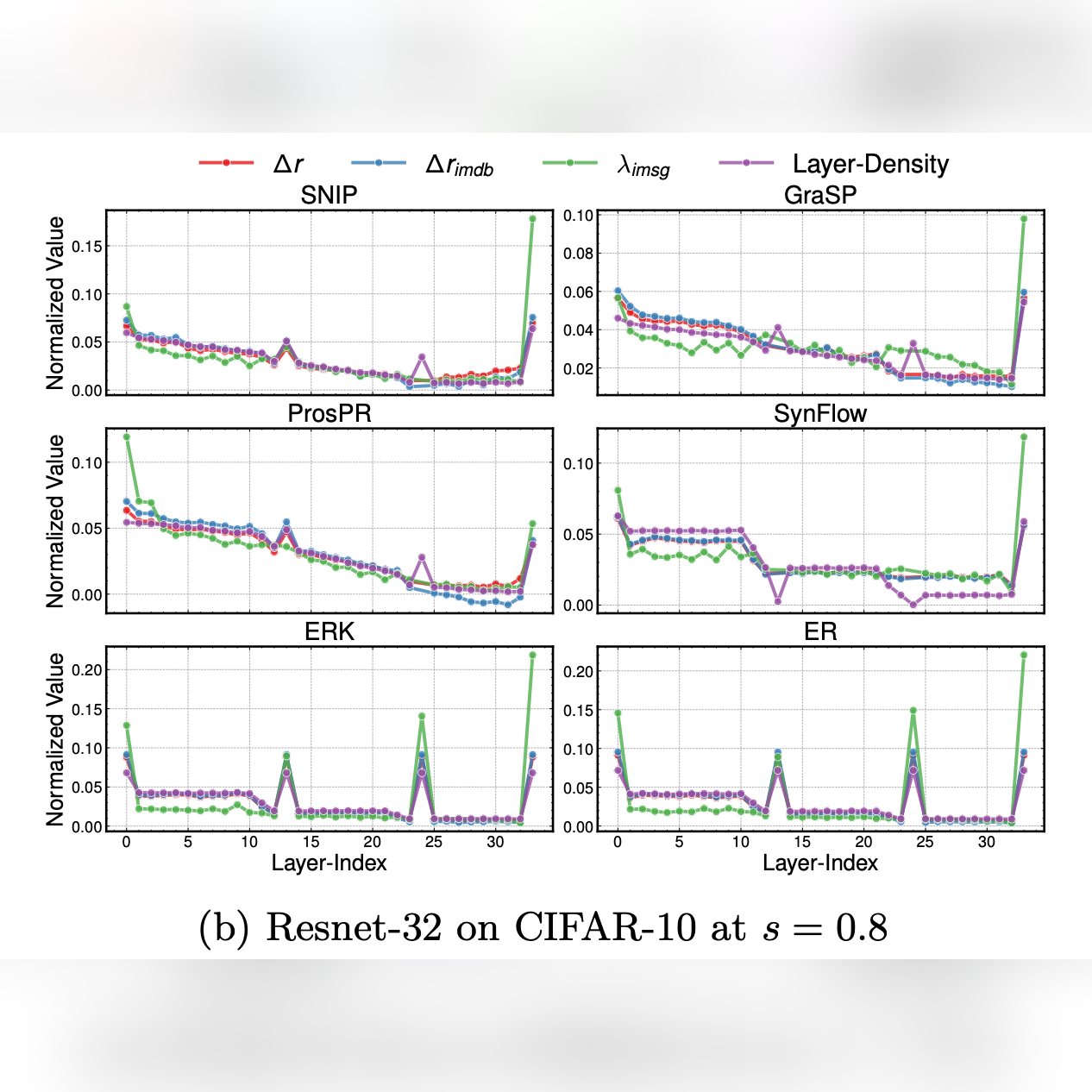
|
Understanding Sparse Neural Networks from their Topology via Multipartite Graph Representations
Elia Cunegatti, Matteo Farina, Doina Bucur, and Giovanni Iacca TMLR - Transactions on Machine Learning Research, 2024 Tweet / arXiv / Code tl;dr. We empirically show (over 1000+ sparse networks) that previous metrics to predict the performance of Sparse NNs are no better than the naîve layer-wise density. We introduce an end-to-end graph encoding that captures model-input interactions, from which a broader spectrum of topological metrics can be extracted. We further show that a mixture of metrics is more informative than established encodings/metrics pairings. |
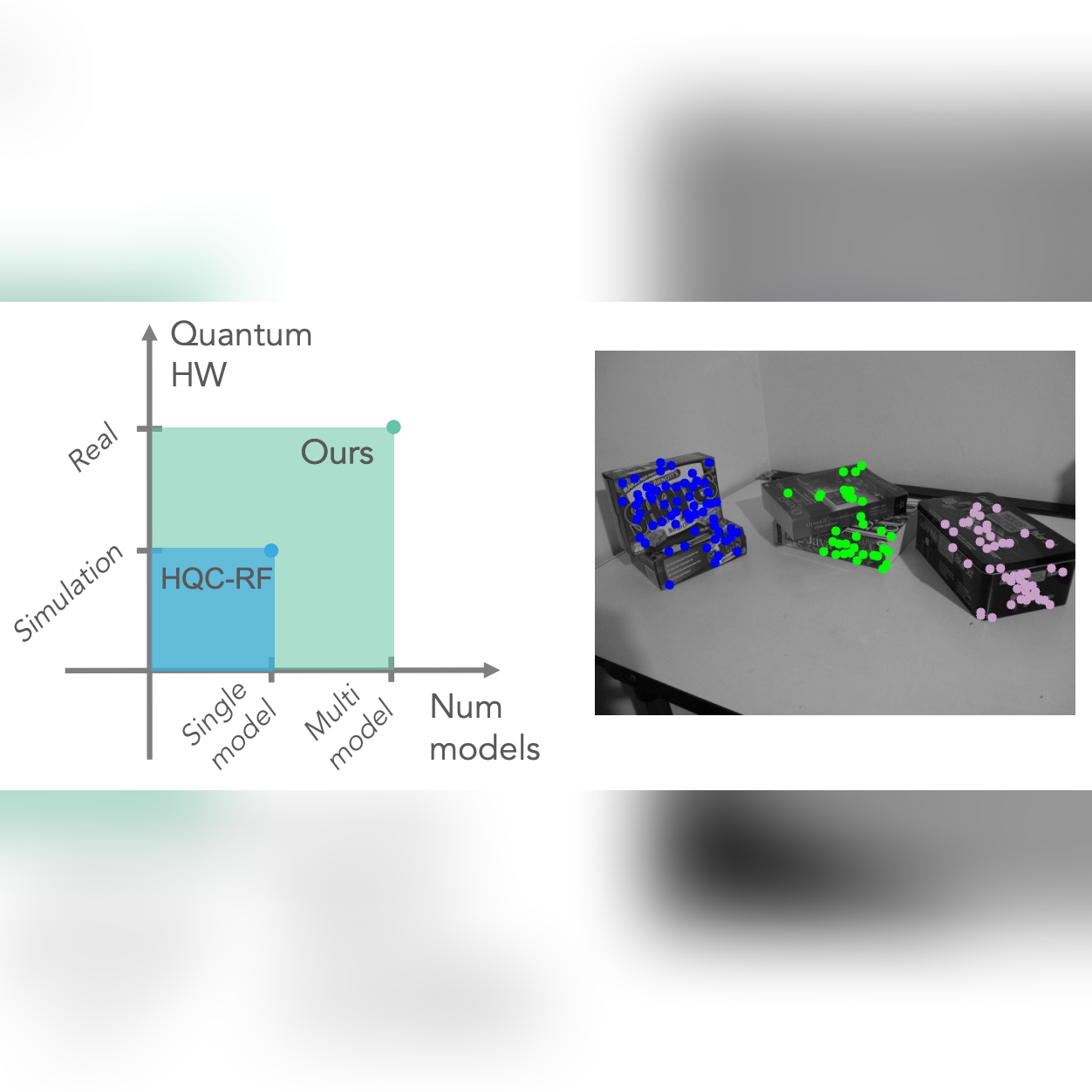
|
Quantum Multi Model Fitting
Matteo Farina, Luca Magri, Willi Menapace, Elisa Ricci, Vladislav Golyanik, and Federica Arrigoni ✨ Highlight at CVPR - IEEE/CVF Conf. on Computer Vision and Pattern Recognition, 2023 arXiv / Code tl;dr. We leverage Quantum Annealers (QAs) to tackle the NP-Hard problem of fitting multiple parametric models to (possibly) outlier-contaminated data, aka Multi Model Fitting (MMF). To do so, we provide a simple mathematical reformulation of MMF as a set-coverage problem for QAs. We further introduce an iterative decomposition scheme which empirically scales to 1000+ qbits reliably. |
|
Website adapted from Jon Barron's template. |